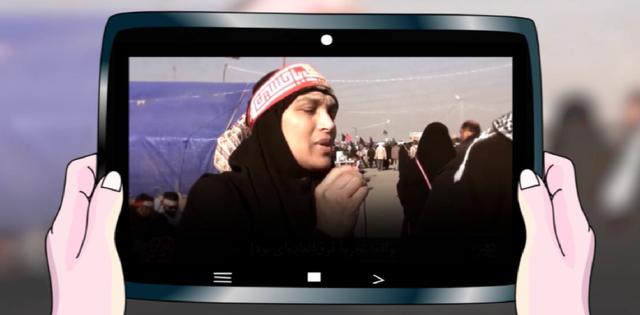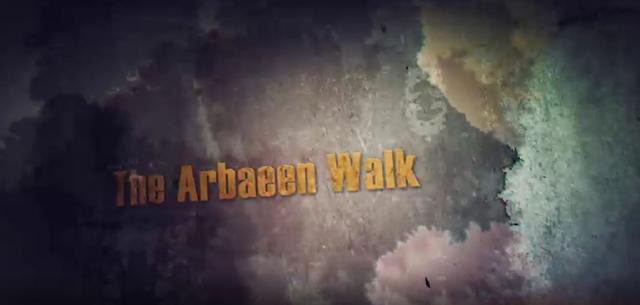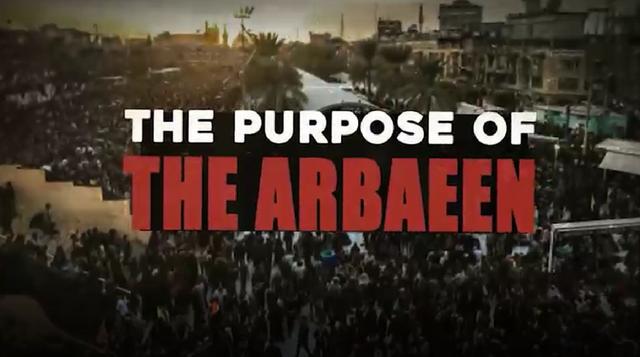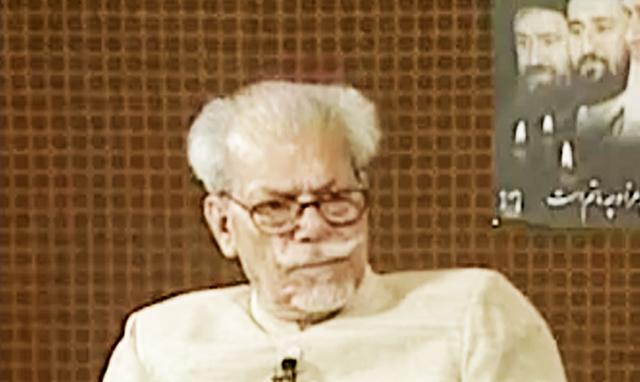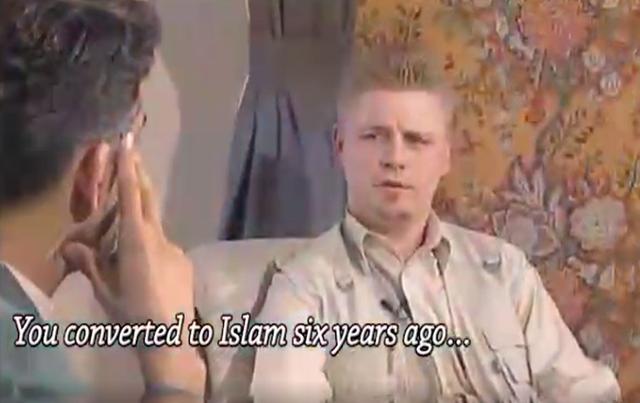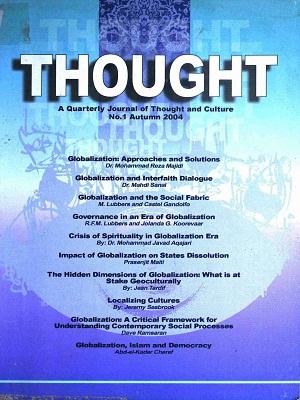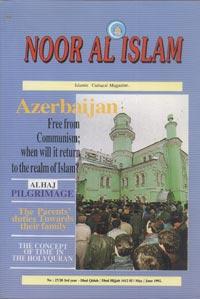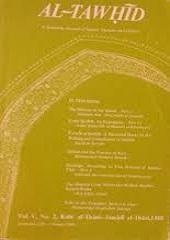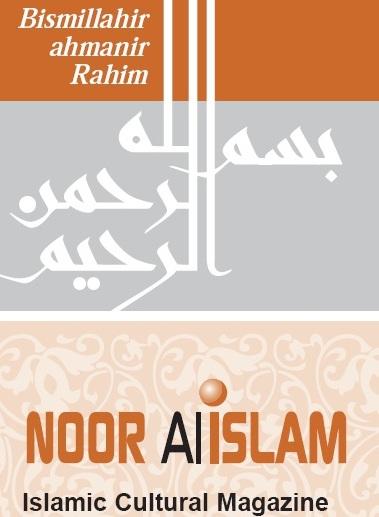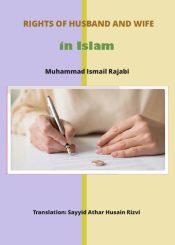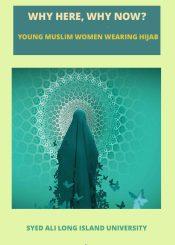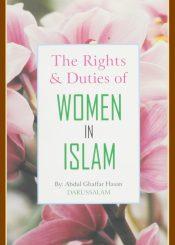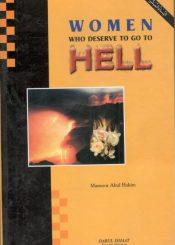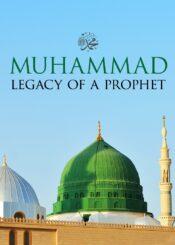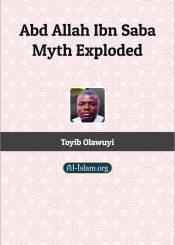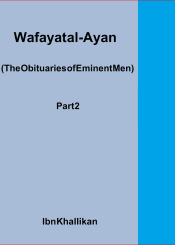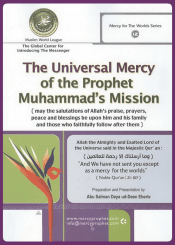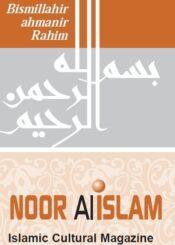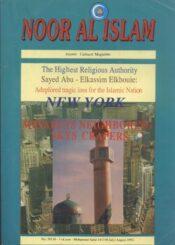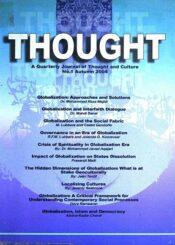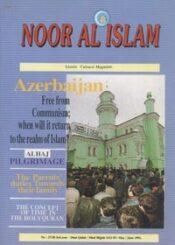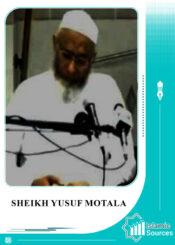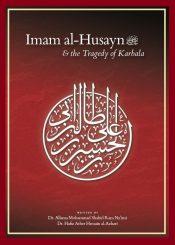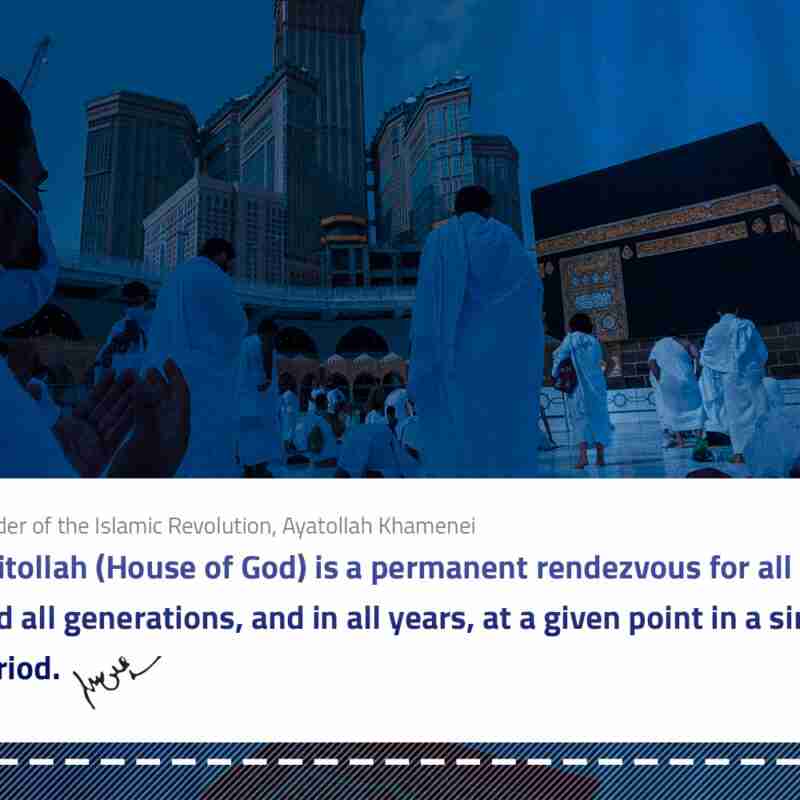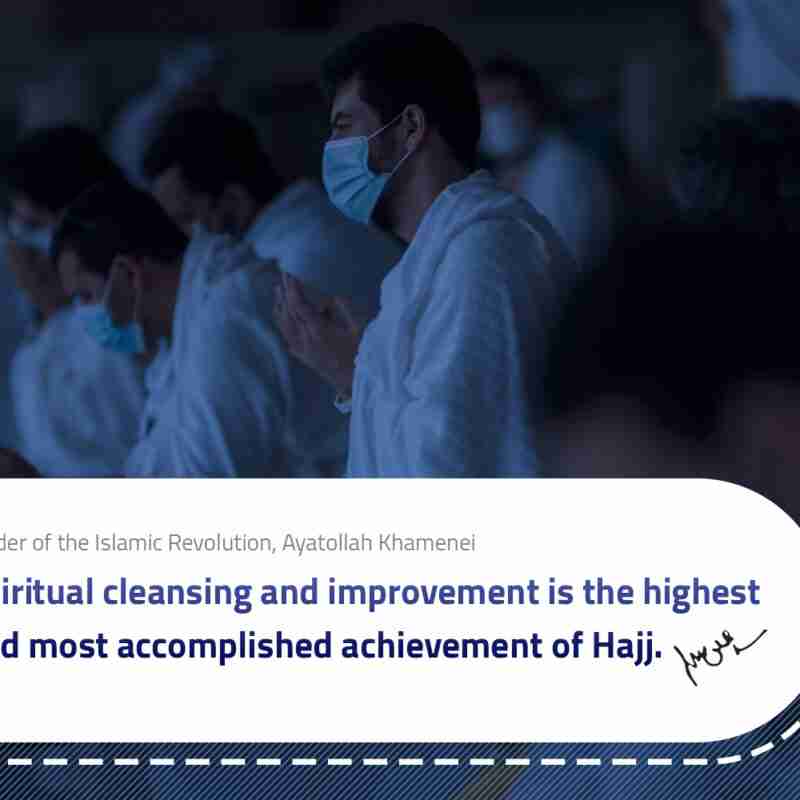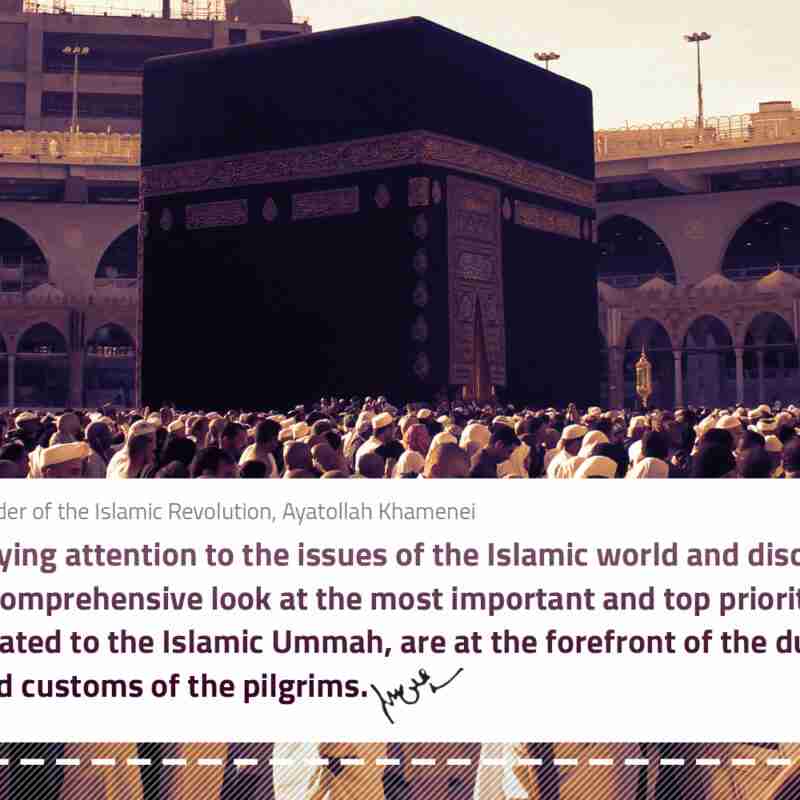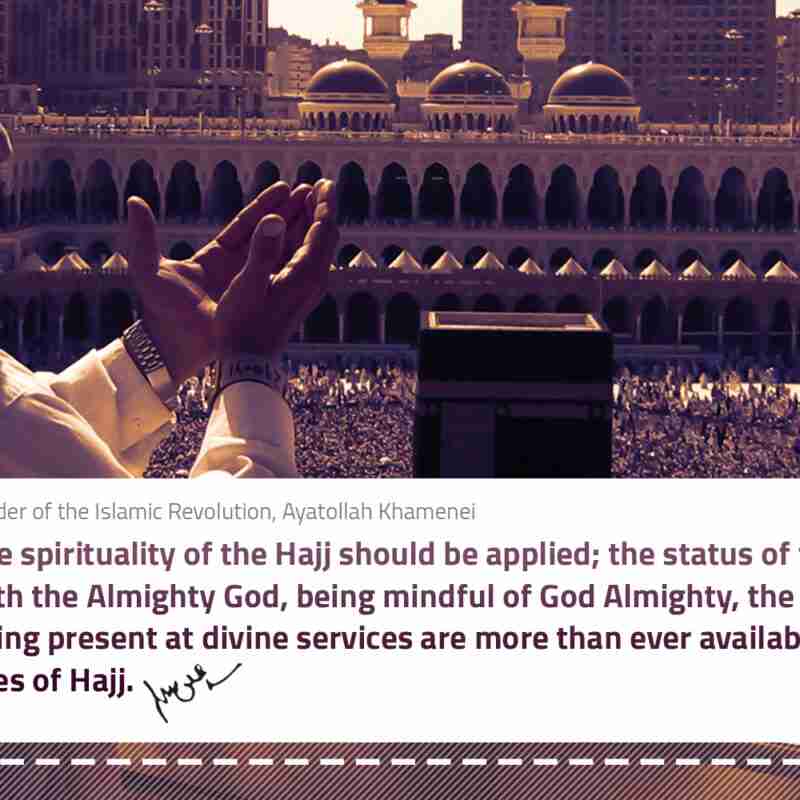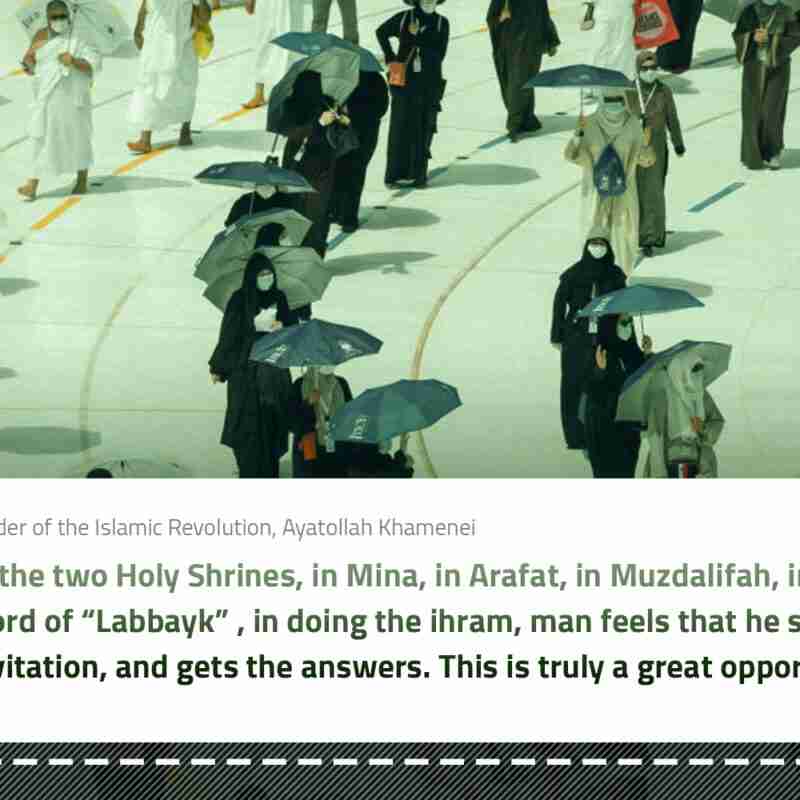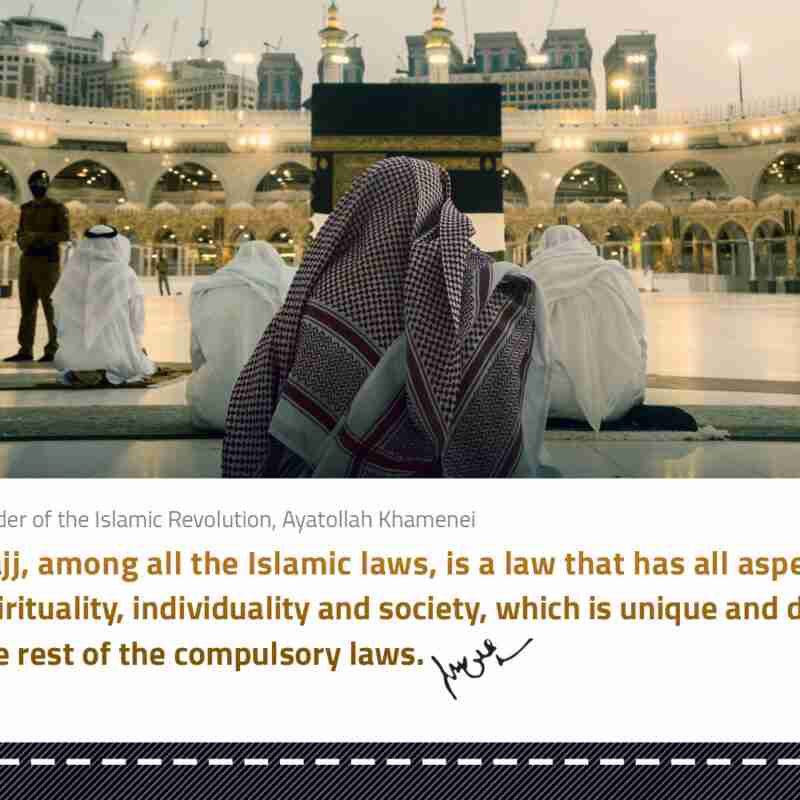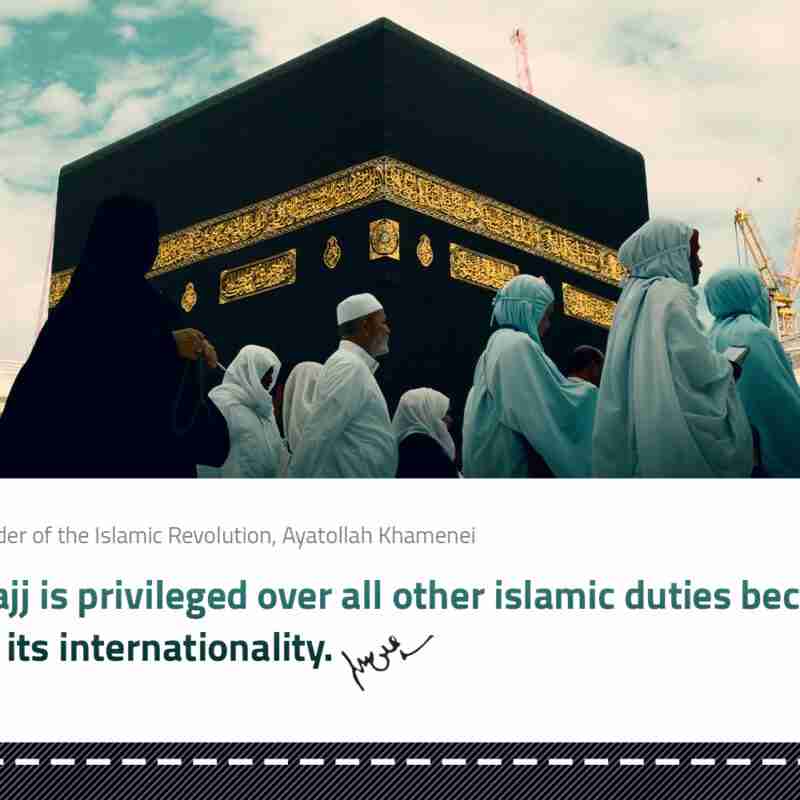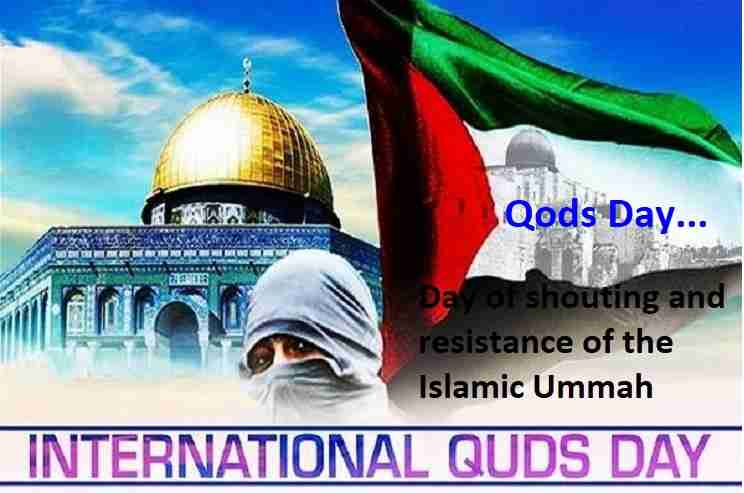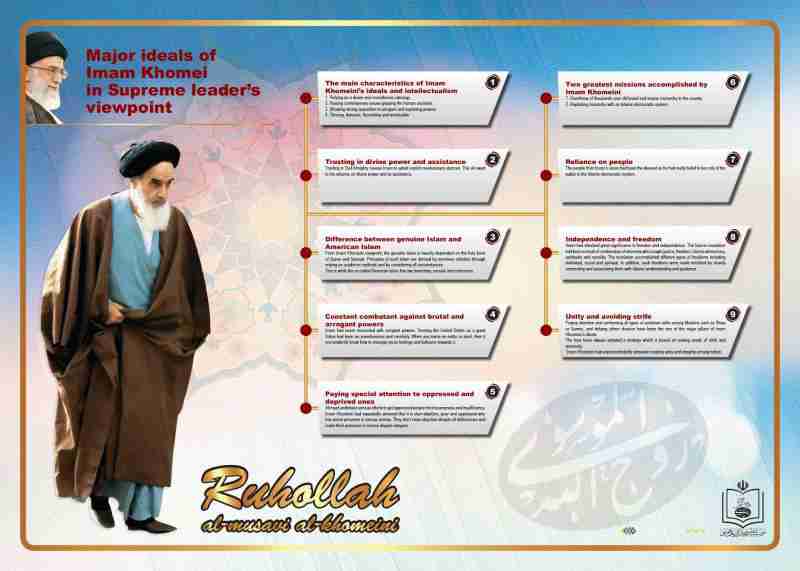Sayyid Ruhollah Musavi Khomeini
Seyyed Ruhollah Mousavi Khomeini (1939-2000), known as Imam Khomeini, is the leader of the Islamic Revolution and the founder of the Islamic Republic of Iran and a Shiite religious authority. He began an open struggle against the Pahlavi monarchy in Iran in 1962. The government of the time arrested him twice and exiled him to Turkey and then to Iraq. He spent 13 years at the Najaf Seminary, leading revolutionary fighters and teaching and writing in theological and religious sciences. On 12 Bahman 1978, he returned to Iran with the expansion of the people's struggles, and after the victory of the revolution on 22 Bahman 1978 until the end of his life (13 Khordad 1989), he was the leader of the Islamic Republic of Iran.
The theory of the absolute guardianship of the jurist, a jurisprudential-political theory based on Shiite beliefs, is his most important theory. He tried to shape the government of the Islamic Republic and its constitution based on this theory. From Imam Khomeini's perspective, government is the practical philosophy of all jurisprudence. His governmental view of jurisprudence led him to believe in innovation in ijtihad while emphasizing the preservation of the framework of traditional jurisprudence. The theory of the role of time and space in ijtihad and some of his influential fatwas can be considered the result of this view.
Muslims, especially Shiites around the world, were very interested in him. His funeral is considered the most crowded funeral in the world, with more than ten million people attending, and every year on the anniversary of his death, a ceremony is held at his tomb with the presence of political and religious figures.
In addition to jurisprudence and principles, Imam Khomeini is also an expert and author in Islamic philosophy and theoretical mysticism, and is considered one of the scholars and masters of ethics. While teaching in Qom, he held ethics classes at the Fayziyyah School. Throughout his life, he lived a simple and ascetic life.
Birth
Imam Khomeini was born on the 20th of Jumada al-Akhira (the birthday of Fatima Zahra (PBUH)) 1320 AH, corresponding to the 1st of Mehr 1281 AH and September 24, 1902 CE. His great-grandfather, Seyyed Heydar Mousavi Ardebili, along with his father-in-law, Mir Seyyed Ali Hamedani, migrated from Iran to Kashmir in the 8th century AH to propagate Islam and Shiism.
Education
Sayyid Ruhollah began his education from his childhood. At first, teachers named "Mirza Mahmud" and "Mirza Mohammad Mahdi" came to his house and taught him. After that, he learned "Am Juz", "Golestan" and "Bustan Saadi" from another teacher named Mulla Abul Qasim. Then he went to school to benefit from modern sciences. For a while, he also studied "calligraphy" and elementary sciences (Suyuti, logic and long-form) with his older brother "Aqamar Murtaza".
Beginning of youth and migration
In 1300 AH (1339 AH), at the age of 19, he went to Arak to benefit from the "Sepahdar" seminary, which was run under the supervision of Ayatollah Abdul Karim Ha'eri Yazdi. There, he learned sciences such as "Mathic" (under Agha Sheikh Mohammad Golpaygani), "Matwal" (under Agha Mirza Mohammad Ali Borujerdi), and "Sharh Lameh" (under Agha Abbas Araki).
Migration to Qom
This period of Ruhollah's life began with his migration to Qom and coincided with the desegregation policies of the Reza Khani era (1304-1320). During this time, Ruhollah was busy studying, teaching, writing books, and getting to know prominent militant scholars, such as: "Hajj Agha Noorullah Isfahani", "Mudras" and some others. The goal of the scholars during this period of stifling Reza Khani was to preserve the Qom Seminary, the fruit of which was manifested in leading the people and establishing the Islamic government in 1957. However, the unique role of Ayatollah Seyyed Hassan Modarres in developing the political personality and instilling the spirit of resistance in the young Ruhollah is noteworthy. Agha Seyyed Ruhollah migrated to this city in 1301 AH (1340 AH), at the age of 20, with his teacher, "Hazrat Ayatollah Abdul Karim Ha'eri Yazdi", the founder of the Qom Seminary. He completed his elementary studies with "Hazrat Ayatollah Seyyed Ali Yathrib Kashani" and then attended the external studies of Ayatollah Ha'eri until he attained the degree of Ijtihad.
Scientific Personality
Agha Seyyed Ruhollah, with his extraordinary talent, quickly mastered various fields of science. In addition to jurisprudence and principles, he also studied philosophy and mysticism at the highest level under the prominent professors of the time (Ayatollah Hajj Seyyed Abul-Hasan Rafi'i Qazvini and Ayatollah Mirza Mohammad Ali Shahabadi) in Qom, and within 6 years, he made an extraordinary leap in these sciences. In 1315 AH (1355 AH), when Ayatollah Ha'eri passed away, Hajj Agha Ruhollah was considered one of the prominent scientific figures of the Qom Seminary.
Teaching of Fiqh and Principles
Ayatollah Hajj Agha Ruhollah began his Fiqh and Principles lessons at the age of 44 (in 1364 AH), which coincided with the arrival of Ayatollah Borujerdi in the city of Qom. Some of the characteristics and advantages of his Fiqh lessons were that he presented the problems of each issue and explained and expanded its topics in detail, did not mix fundamental and philosophical topics, proposed new and innovative theories, and did not imitate previous scholars.
Professoren
Hazrat Imam studierte bei zahlreichen Professoren in verschiedenen Wissensgebieten wie persischer und arabischer Literatur, Rechtswissenschaft und Prinzipien, Logik, westlicher und östlicher Philosophie, Mystik, Theologie, Theologie usw. Einige seiner Professoren lauten einigen Quellen zufolge wie folgt:
Agha Mirza Mahmoud Iftikhar al-Olama;
Mirza Reza Najafi Khomeini;
Ayatollah Fassin;
Hadsch Scheich Mohammad Golpayegani;
Agha Mirza Mohammad Ali Borujerdi;
Agha Abbas Araki;
Mirza Mohammad Ali Adib Tehrani;
Ayatollah Seyyed Mohammad Taqi Khansari;
Agha Sheikh Mohammad Reza Masjedshahi Isfahani;
Ayatollah Seyyed Ali Yathrabi Kashani;
Ayatollah Hajj Seyyed Abul-Hasan Rafi'i Qazvini;
Ayatollah Hadsch Scheich Abdul-Karim Ha'eri;
Ayatollah Mohammad Hossein Borudscherdi;
Ayatollah Hajj Mirza Ali Akbar Hakami Yazdi;
Ayatollah Mirza Mohammad Ali Shahabadi;
Ayatollah Haj Mirza Javad Maleki Tabrizi.
Studenten
Ayatollah Seyyed Jalaluddin Ashtiani;
Ayatollah Hossein Taqwa Eshtehardi;
Ayatollah Abdullah Javadi Amoli;
Ayatollah Morteza Haeri Yazdi;
Ayatollah Mahdi Haeri Yazdi;
Ayatollah Seyyed Ali Khamenei;
Ayatollah Seyyed Mustafa Khomeini;
Ayatollah Jafar Sobhani;
Ayatollah Seyed Musa Shabir Zanjani;
Ayatollah Yousef Sanei;
Ayatollah Hassan Taheri Khorramabadi;
Ayatollah Mohammad Fadel Lankarani;
Ayatollah Mohammad Ali Garami;
Ayatollah Abbas Mahfouzi Gilani;
Ayatollah Mohammad Mohammadi Gilani;
Ayatollah Hossein Mazaheri;
Ayatollah Mohammad Hadi Marefat;
Ayatollah Hossein Ali Montazeri;
Ayatollah Seyed Abdul Ghani Mousavi Ardebili;
Ayatollah Seyed Abdul Karim Mousavi Ardebili;
Ayatollah Mohammad Reza Mahdavi Kani;
Ayatollah Hossein Nouri Hamedani.
- Works and Compositions
The Imam's writing career began with intellectual issues and continued in the fields of ethics, practical sciences, jurisprudence and principles.
1. Misbah al-Hidayah (around the age of 27);
2. An explanation of the supplications for the month of Ramadan (age of 29);
3. Arba'in Hadith;
4. A commentary on the texts of Qaysari's ruling;
5. A commentary on the Mafatih of the Unseen;
6. The Secrets of Prayer or the Mi'raj of the Wayfarers;
7. A treatise on Medicine and Will;
8. A commentary on the treatise on the explanation of the hadith of Ras al-Jaloot by Qadi Sa'id and an independent explanation of the same hadith;
9. Kashf as-Sir;
10. An explanation of the hadith of the soldiers of reason and ignorance;
11. The manners of prayer;
12. The treatises: On the rule of no harm and no harm, companionship, balance and preference, ijtihad, imitation and taqiyah. In two volumes;
13. Tahrir al-Wasilah. The complete text of the fiqh period;
14. Al-Bay: Imam Khomeini’s jurisprudential lessons in Najaf Ashraf;
15. Kitab Al-Taharah: Jurisprudential discussions;
16. Tahdhib Al-Asul: Lectures on the Principles of Jurisprudence in Qom by Professor Ja’far Sobhani, published in three volumes;
17. Nil Al-Awtar Fi Bayan Qada La-Dharr and La-Dharr. Lecture on the external lesson;
18. Risala Fi Ijtihad Wa Al-Taqlid. Lecture on the external lesson;
19. Tafsir Al-Mas’il;
20. Zabdat Al-Ahkam;
21. Islamic Government or Wilayat Al-Faqih. A collection of lectures and lectures by Imam Khomeini on Islamic government;
22. Struggle with the Soul or Jihad Al-Akbar: A collection of lectures by the Imam on ethics in Najaf Ashraf;
23. Makasib Muharram. Two volumes;
24. A treatise containing benefits in some difficult issues.
Death
Imam Khomeini (may God have mercy on him) passed away in Tehran on the evening of Saturday, June 13, 1989, at the age of 87. The people's farewell to the late Imam Khomeini was held on June 15, 1989, at the Imam Khomeini prayer hall, and his body was buried next to Behesht-e-Zahra - the tomb of the martyrs of the Islamic Revolution - which is known as the "Imam Khomeini Shrine".








